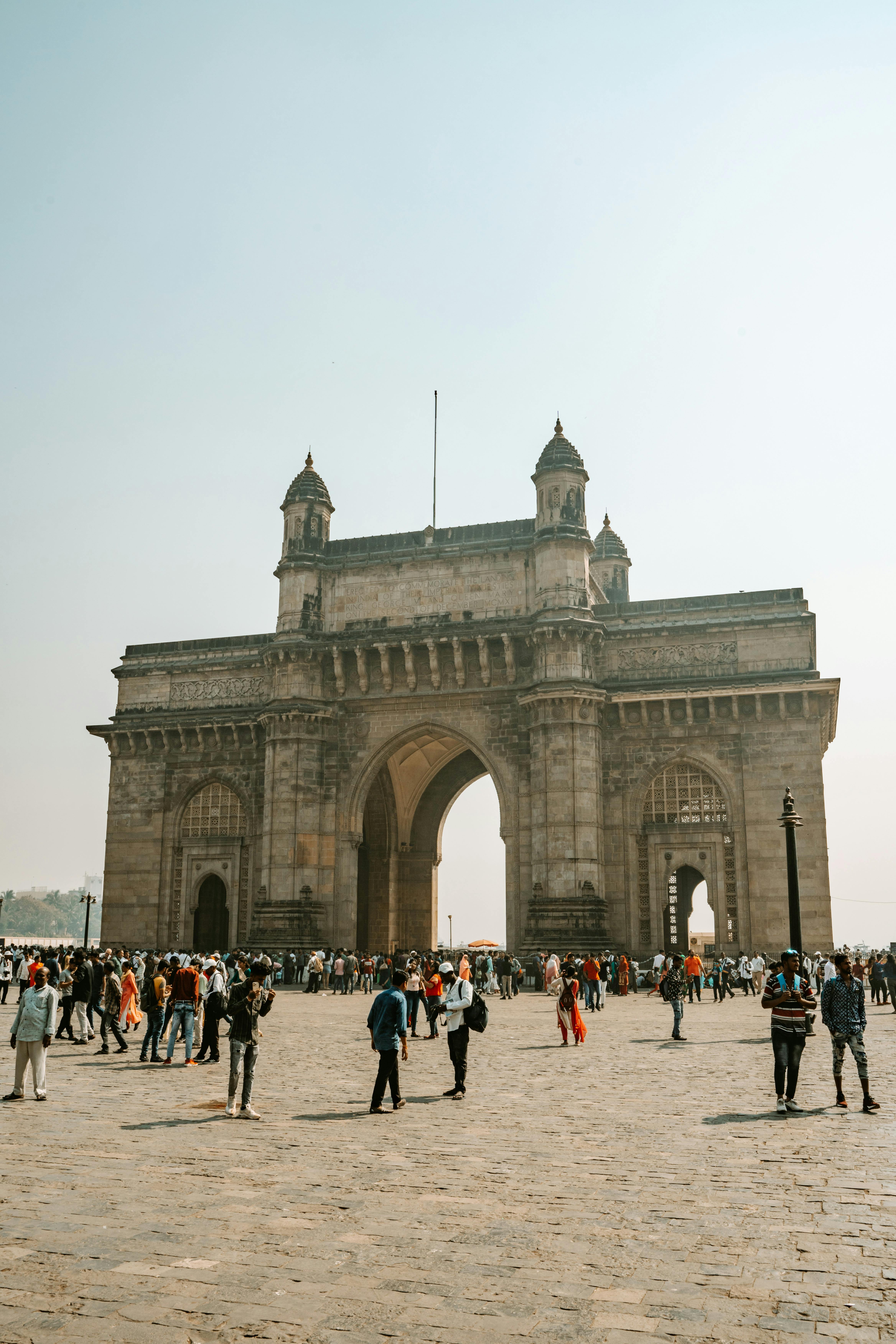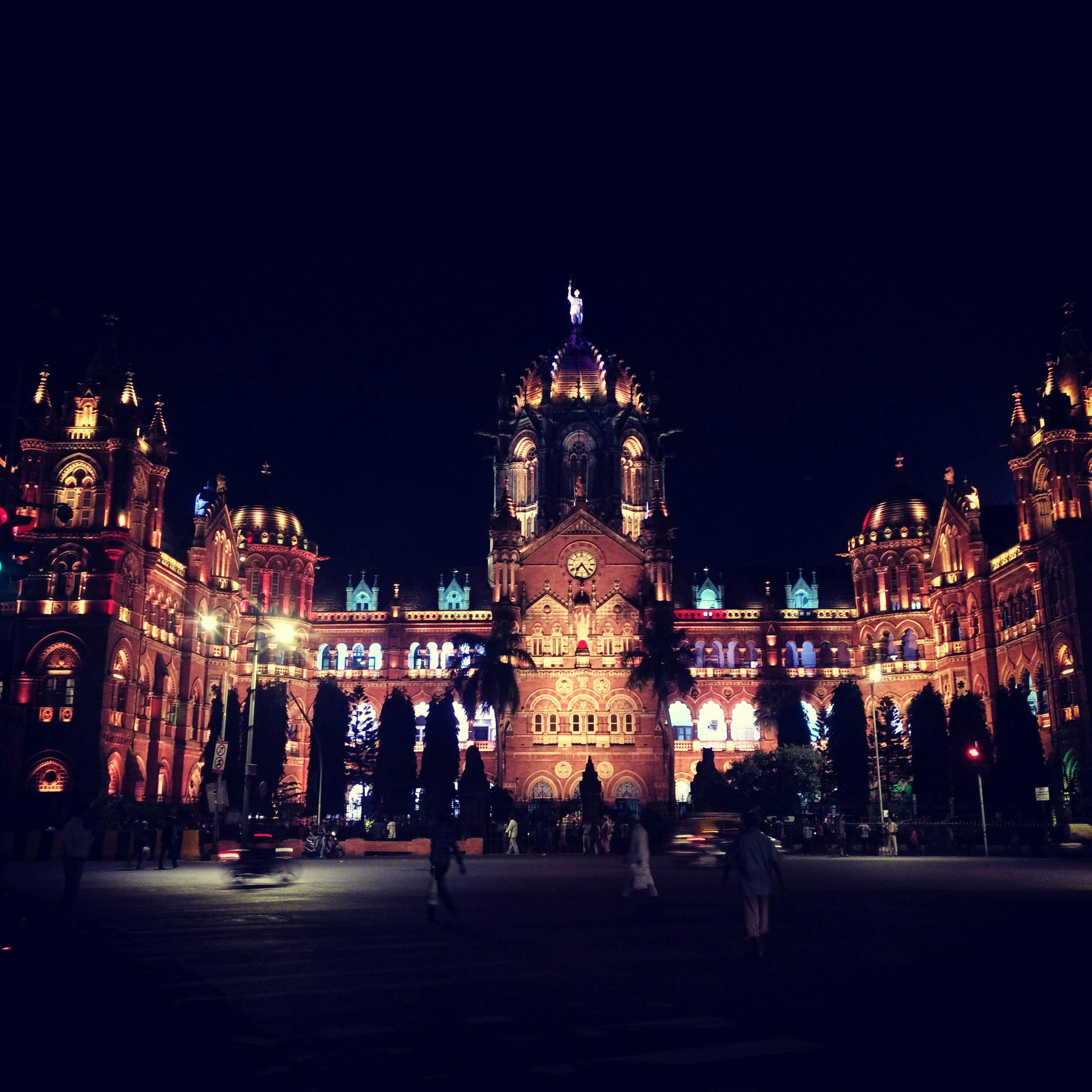There’s a moment, if you stand at Marine Drive during twilight or watch it through a virtual window from home, when Mumbai feels like it’s breathing. The Arabian Sea turns silver, the skyline glows softly, and the city’s heartbeat begins to rise as crowds spill into streets, trains, and markets.
Mumbai isn’t just a city. It’s a force shaped by the sea, by trade, by dreams, and by people who arrived with nothing but hope. But long before the skyscrapers, the traffic, the monsoon smells, and the cinema lights, Mumbai began as something far quieter seven small islands covered in mangroves and fishing villages. That’s where our story begins.

Explore Mumbai From Home: Virtual Travel Through Its Soul
Even if you’re miles away, virtual travel lets you wander through Mumbai’s lanes and legends:
- Walk along Marine Drive as waves crash beside you.
- Enter the Gateway of India and watch ferries drift toward Elephanta.
- Explore the old mills of Lower Parel.
- Drift through Bandra’s graffiti-clad streets.
- Visit Dharavi’s craft clusters or Colaba’s bustling bazaars.
The sounds, the colors, the motion, they all come alive through your screen.
Where the City First Took Shape: Seven Islands and Endless Sea
Imagine logging into a virtual map and zooming back—way back—into a version of Mumbai that barely resembles today’s bustling metropolis. Instead of highways and high-rises, you see seven distinct islands floating off the western coast of India, each shaped by the Arabian Sea’s restless waves.
These islands, Bombay, Colaba, Little Colaba, Mazagaon, Mahim, Parel, and Worli, were never meant to be one city. They were disconnected, uneven, swampy, and often flooded. But they had something rare: a natural deep harbor, a prime coastal location, and access to sea routes that connected India to Arabia, East Africa, and beyond.
Even in their earliest days, these islands attracted fishing communities. The Kolis, Mumbai’s original inhabitants, built villages, cast nets, and lived by the rhythm of the tides. Their goddess, Mumbadevi, is the very reason Mumbai carries the name it does. Long before Mumbai became “Bombay” and then Mumbai again, it was their home.
How Empires and Traders Discovered Its Power
Our virtual footsteps carry us forward into the early medieval period. These islands began appearing on trade routes, catching the eye of kingdoms like the Mauryas and later the Shilahara and Yadava dynasties. But the real turning point came with the arrival of the Portuguese in the 16th century.
To the Portuguese, these muddy islands seemed unimpressive at first. But they soon realized the deep harbor was a hidden jewel. They built small forts, churches, and trading posts, unknowingly setting the foundation for a future powerhouse. Then, history took a dramatic, almost cinematic turn that changed Mumbai forever.
In 1661, King Charles II of England married Catherine of Braganza, the Portuguese princess. Among her lavish dowry was not just jewels or estates, but the seven islands of Bombay. The British East India Company quickly leased the islands from the king and began itsscattered islands ambitious plan: to turn these disconnected pieces of land into a thriving trading city.
The Great Land Reclamation: A City Literally Built by Hand

As we continue walking through time, we arrive at one of Mumbai’s most transformative projects its land reclamation. The British recognized the harbor’s power, but they needed more land to build the city they envisioned.
So they began a massive engineering feat: connecting the islands with causeways, filling in the watery gaps, and reshaping the land. The Hornby Vellard project in the late 1700s was the most famous of these efforts. It joined several islands and protected low-lying flats from flooding.
Slowly, over decades, the gaps filled. Villages merged. Markets expanded. Roads stretched across what used to be a creek and a swamp. By the 19th century, Bombay was no longer seven islands it was one growing city. And what grew from this newly shaped land was unlike anything India had seen before.
A City That Became the Gateway to India

By the mid-1800s, our virtual walk brings us into a vibrant, multicultural, rapidly changing city. Bombay had become the “Gateway to India,” a bustling port where ships carried cotton, spices, opium, and passengers from every corner of the world.
Three major forces shaped Bombay’s early character:
1. Trade and Industry
The cotton boom during the American Civil War turned Bombay into an economic powerhouse. Mills sprang up. Merchants Parsi, Gujarati, Jewish, Arab, Armenian built sprawling businesses. The city glowed with opportunity.
2. Migration and Culture
People poured in from Rajasthan, Goa, Tamil Nadu, Uttar Pradesh, Bengal. Each brought language, food, songs, beliefs. Bombay became a mosaic, not a melting pot every culture stayed distinct yet somehow blended into the city’s rhythm.
3. Innovation and Infrastructure
Railways. Docks. The iconic Victoria Terminus (now CST). Universities. Hospitals. Bombay didn’t just grow; it rose, confident and unstoppable.
The Freedom Era: A City That Questioned, Fought, and Dreamed
As we step into the early 20th century, Mumbai becomes the beating heart of India’s freedom struggle. Leaders like Mahatma Gandhi, Bal Gangadhar Tilak, and Dr. B.R. Ambedkar spoke, organized, and inspired from right here.
Mass movements gathered in its streets. Workers’ unions strengthened. Newspapers printed fiery editorials. Bombay wasn’t just a city; it was a voice.
Modern Mumbai: Where the Past Walks Beside You

Now, let’s return to the present and walk virtually down Colaba Causeway or through the lanes of Kala Ghoda. Look around, traces of every era are still here. You’ll see Portuguese-style churches standing beside British-era architecture. Koli fishing boats bobbing behind gleaming skyscrapers. Street vendors calling out over the honking traffic. A city that moves fast but remembers deeply.
At the Gateway of India, the sea still whispers old stories, the same way it did when the Kolis prayed to Mumbadevi and looked out at the tides.
Why Mumbai’s Origin Still Matters Today
Mumbai’s spirit comes from how it began. Mumbai’s It was born from water and resilience, shaped by trade and diversity, strengthened by migration and ambition, and lifted by dreamers who turned seven scattered islands into a global city.
Mumbai grew not because conditions were perfect, but because people believed they could build something extraordinary despite the odds. And that spirit, raw, restless, determined, is still the pulse you feel when you walk through the city today.
Mumbai’s origins are more than history; they’re a reminder. A reminder that even the most fragmented pieces can come together to create something powerful. A reminder that grit and imagination can reshape the world just like they reshaped those seven islands into the Mumbai we know and love. So the next time you watch the sun rise over the Arabian Sea, remember: you’re looking at a city that was never meant to exist the way it does today. And yet, here it stands—bold, beautiful, and unstoppable.

